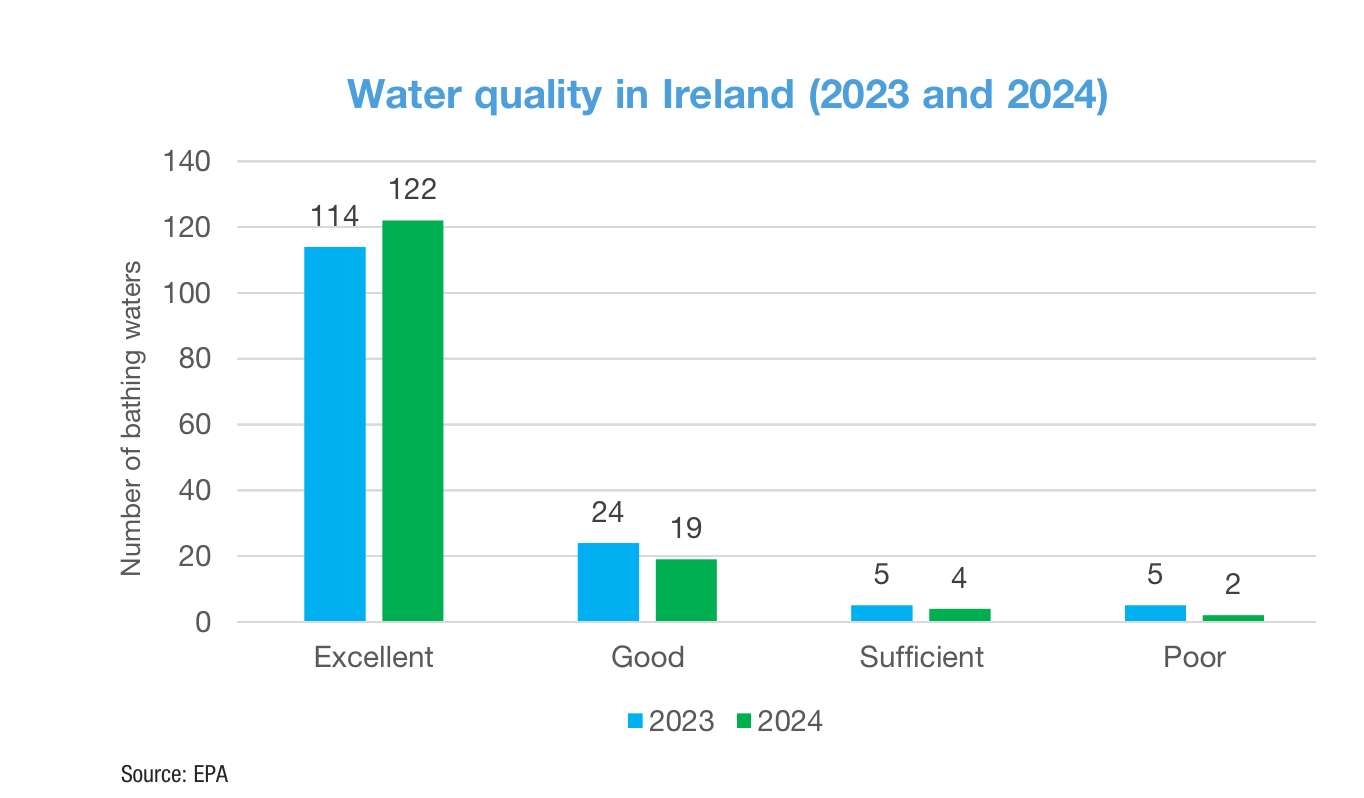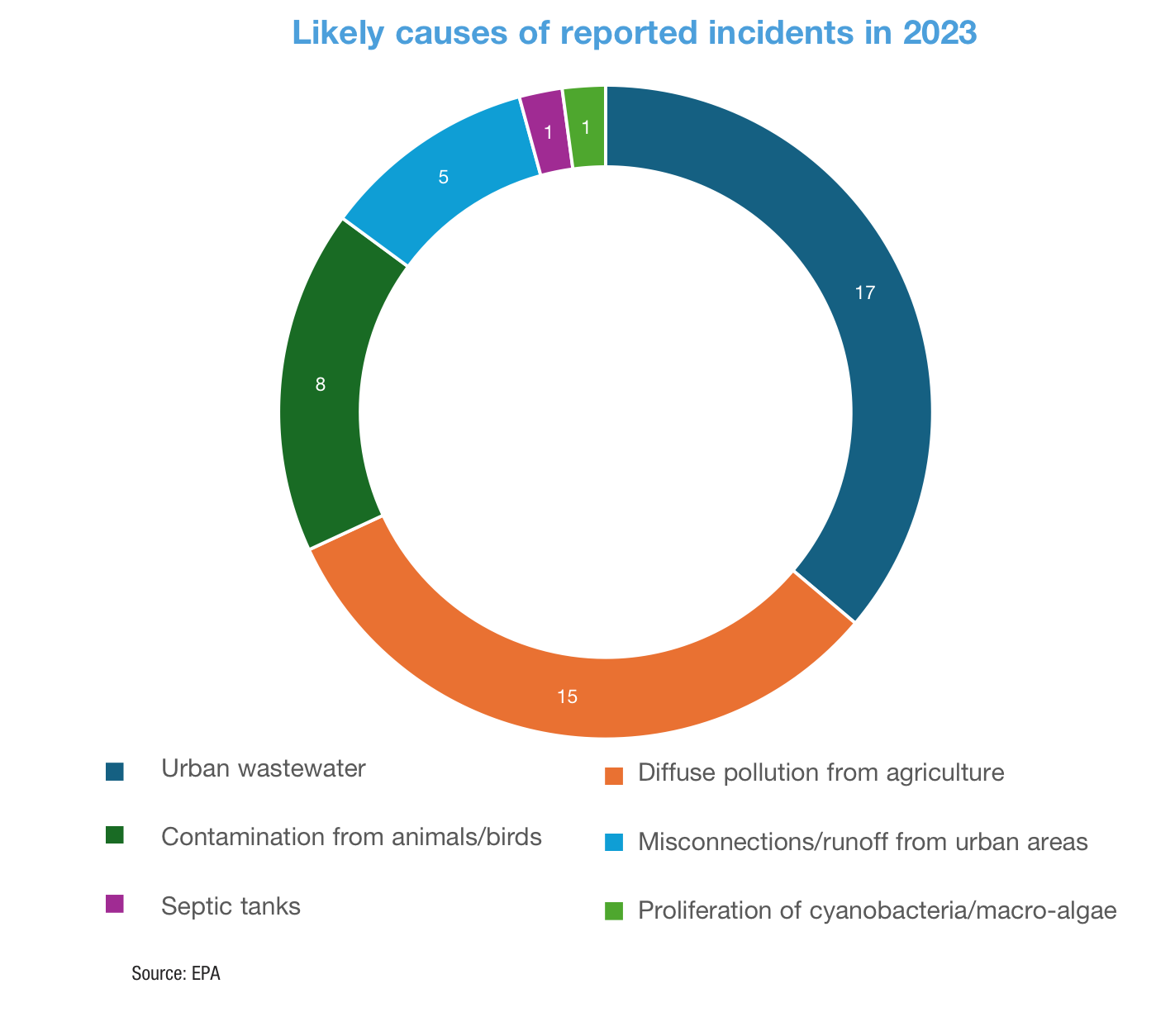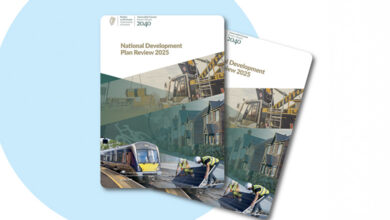‘Positive’ results for Irish bathing water quality

With 96 per cent of assessed bathing waters reaching the minimum required standard for water quality, Irish bathing water quality remains ‘overall very good’.
In 2024, of the 151 identified bathing waters assessed, 145 (96 per cent) met or surpassed the minimum required standard of sufficient. In total 122 waters (81 per cent) were of excellent quality, a marked increase from 114 (77 per cent) in 2023.
The vast majority of bathing waters have excellent or good quality:
- 96 per cent of the 151 identified bathing waters met or exceeded the minimum standard.
- 122 bathing waters (81 per cent) were of excellent quality, a sizable increase from 114 for 2023.
- Two bathing waters were poor, (down from five for 2023) and the Environmental Protection Agency (EPA) have confirmed that both will have a swimming prohibition for the 2025 season. These are Lady’s Bay, Buncrana in County Donegal and Sandymount Strand in Dublin.
- One bathing water – Half Moon, Dublin – was classified for the first time with excellent quality.
Local Improvements
Three beaches – Front Strand, Loughshinny Beach in Fingal, and Trá na mBan, An Spidéal in County Galway – previously had poor quality in 2023. After Special Management Plans were put in place, samples taken in 2024 have shown improvements in water quality for all three bathing waters.
At Trá na mBan, An Spidéal, a new water treatment plant has been commissioned, and all samples taken in 2024 returned results of excellent water quality. In Balbriggan, identification and resolution of storm water misconnections have contributed to improved results. Both beaches are in a temporary category while improvements are monitored. Loughshinny Beach water quality has increased from poor to sufficient for 2024.


What impacts bathing waters?
Urban wastewater was most frequently reported as the likely cause of incidents in 2024. Other reported causes included agricultural runoff, contamination from animals/birds and pollution entering the surface water collection system through misconnections or runoff from urban areas.
Heavy rainfall can result in wastewater overflows and in runoff from agricultural lands and urban areas, which can cause short-term deterioration in water quality. With 2024 being a drier year than 2023, there were less than half of the bathing water warnings in 2024 (113) compared to 2023 (275).
Pollution incidents
In 2024 the EPA was notified of 34 pollution incidents which resulted in the closure of bathing waters, down from 45 in 2023. The majority were due to the presence of pollution in sample results (18 incidents) and due to algal blooms (1 incident). Bathing waters were also closed as a precaution after overflows in the sewer network (15 incidents).
European context
Under the Bathing Water Directive, over 22,000 bathing waters are monitored throughout Europe. Ireland, with 81 per cent of bathing waters having excellent quality, is below the EU average of 85 per cent. In five countries – Cyprus, Bulgaria, Greece, Austria, and Croatia – 95 per cent of bathing waters were of excellent quality. Poland, with 58 percent, had the worst results in the EU.





